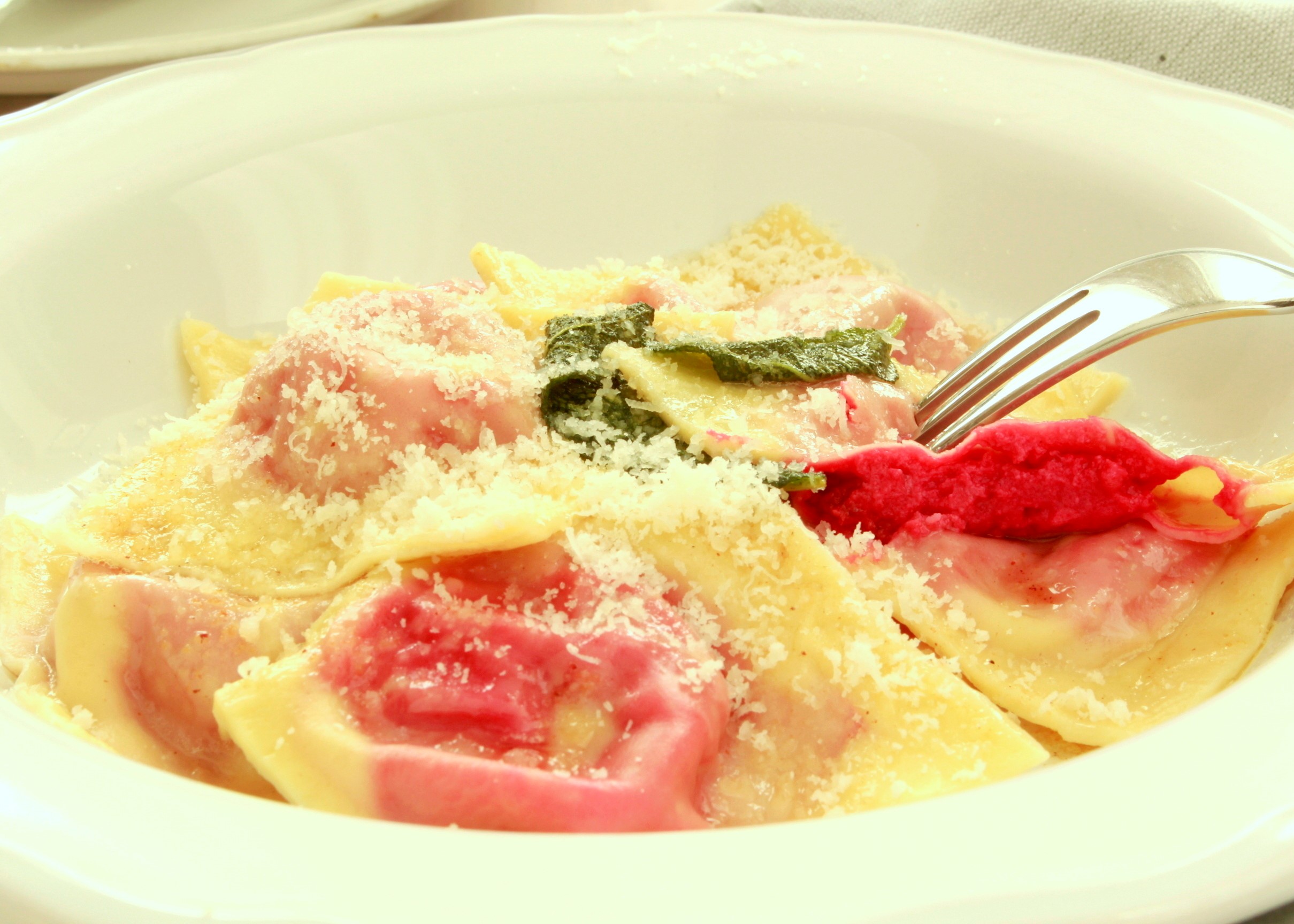
 Paola Lovisetti Scamihorn
Paola Lovisetti Scamihorn
Italian cuisine: Ravioli with beets and ricotta
- WTI Magazine #111 Jan 19, 2019
-

 Paola Lovisetti Scamihorn
Paola Lovisetti Scamihorn
Ravioli with beets and ricotta cheese is, without doubt, an elegant and colorful vegetarian dish that can be enjoyed as a first course or a main course. The typical sauce is butter and sage, topped with some grated Parmesan and freshly ground pepper. I love beets, they are one of my favorite winter vegetables. The intense color, due to some pigments - called betalains - gives an impressive, inviting look and healthy benefits.
Beets are not only beautiful but also a unique source of phytonutrients that have been shown to provide antioxidant, anti-cancer (in particular colon cancer), anti-inflammatory, and detoxifying properties (The Mamma Mia! Diet).
Unlike some other food pigments, betalains are steadily released from food as cooking time is increased. I recommend that you keep steaming times for beets to 15 minutes or less, and roasting times to under an hour. For this reason I suggest purchasing small or medium-sized beets.
Smaller, younger beets are tenderer and the cooking time is faster. In Italy you can puchase pre-steamed or roasted beets from the local green grocer, therefore you don't need to cook them yourself. Ravioli is one of the staples of the Italian cuisine and, for more information on ravioli, you can also try ravioli with spinach and ricotta.
RAVIOLI CON BARBABIETOLA E RICOTTA (RAVIOLI WITH BEETS AND RICOTTA)
Total preparation time: 1 1/2 hours Cooking time: 5-6 minutes Servings: 4 -6
INGREDIENTS
Fresh Pasta
330 g (about 2 cups) Italian Grade 00 flour or unbleached all-purpose flour
3 large eggs
Semolina flour
Filling
250 g (1 ½ cups) cooked and diced beets
300 g (1 heaping cup) fresh ricotta cheese (you can use either cow or goat ricotta)
150 g (1 ½ cups) Parmesan cheese, grated
Salt, freshly ground pepper and nutmeg to taste
DIRECTIONS
1. Prepare the filling. Blend the beets in a food processor or blender until smooth. Transfer the beets into a bowl, add the ricotta, Parmesan, pepper and nutmeg. Mix gently. Cover and refrigerate until needed